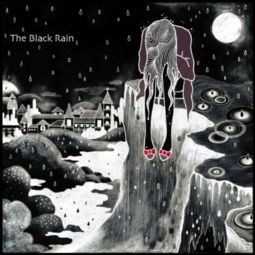The Art of Saree:An Exploration into the World of Saree Textiles
Saree, a traditional garment from India, is renowned for its intricate embroidery and rich fabrics. This article delves into the art of saree textiles, exploring their cultural significance, historical evolution, and contemporary trends. The article highlights the importance of traditional techniques such as hand-loom weaving and block printing in creating saree fabrics that are both beautiful and sustainable. It also discusses the impact of globalization on the production and marketing of saree textiles, highlighting the challenges faced by artisans and small-scale producers. The article concludes by emphasizing the need for preserving these traditional crafts while embracing modern innovations to ensure the continued success and relevance of saree textiles in the global fashion industry.
Introduction: The saree, a traditional piece of clothing in India, is not just an item of clothing but a cultural treasure. It has been woven with intricate designs and patterns for centuries, reflecting the rich heritage and artistic prowess of the Indian subcontinent. In this essay, we will delve into the world of saree textiles, exploring their history, techniques, and the various types that are available. We will also highlight some exceptional examples of saree production and its impact on the local economy.
History and Evolution: The saree traces its roots back to ancient India, where it was worn by royalty and high-caste women. Over time, the saree evolved into a versatile garment that could be worn as a dress, skirt, or even as a shawl. Today, the saree is a symbol of Indian culture and is worn by millions across the world.
Techniques: Saree production involves several steps, including weaving, dyeing, and finishing. The weaving process is the most crucial as it determines the overall quality of the saree. Different types of sarees are produced using different techniques, such as handloom, machine-woven, and batik.
Handloom: Handloom sarees are made using traditional hand-knotted cotton yarn. They are known for their softness and delicate texture. Handloom sarees are often associated with luxury and are considered a symbol of wealth and status.

Machine-Woven: Machine-woven sarees are made using modern machinery and are faster and more efficient than handloom sarees. They are popular among working-class women and are affordable. However, they may not have the same level of craftsmanship as handloom sarees.
Batik: Batik sarees are one of the most famous types of sarees in India. They are made by applying designs onto the fabric using wax resist technique. Batik sarees are vibrant and colorful and are often used for festivals and special occasions.
Types: There are several types of sarees, each with its unique characteristics and significance. Here is a brief overview:
-
Sarees: Sarees are the most common type of saree. They are long, flowing garments that can be worn as a dress or skirt. Sarees come in various lengths, from knee-length to floor-length, and in different styles, such as straight, draped, or pleated.
-
Lehengas: Lehengas are large, wide-legged sarees that are typically worn as a formal gown. They are often adorned with elaborate embroidery and sequins. Lehengas are associated with royalty and are often seen at weddings and other important events.
-
Kurtis: Kurtis are short, flowy sarees that are often worn as a top or skirt. They are comfortable and easy to wear, making them popular among young people. Kurtis come in different colors and designs, ranging from simple to complex.
-
Patialas: Patialas are long, loose-fitting sarees that are often worn as a dress or skirt. They are perfect for casual wear and are comfortable to wear all day. Patialas come in different styles, such as straight or draped, and are often adorned with intricate embroidery and sequins.
-
Kaftans: Kaftan is a type of saree that is designed to be worn as a cover-up. It is a lightweight, flowy garment that is perfect for hot weather. Kaftans come in different colors and designs, ranging from simple to complex.
-
Saris: Sarees are long, flowing garments that can be worn as a dress or skirt. They are often decorated with intricate embroidery and sequins. Sarees come in different lengths, from knee-length to floor-length, and in different styles, such as straight, draped, or pleated.
-
Lehengas: Lehengas are large, wide-legged sarees that are typically worn as a formal gown. They are often adorned with elaborate embroidery and sequins. Lehengas are associated with royalty and are often seen at weddings and other important events.
-
Kurtis: Kurtis are short, flowy sarees that are often worn as a top or skirt. They are comfortable and easy to wear, making them popular among young people. Kurtis come in different colors and designs, ranging from simple to complex.
-
Patialas: Patialas are long, loose-fitting sarees that are often worn as a dress or skirt. They are perfect for casual wear and are comfortable to wear all day. Patialas come in different styles, such as straight or draped, and are often adorned with intricate embroidery and sequins.
-
Kaftans: Kaftan is a type of saree that is designed to be worn as a cover-up. It is a lightweight, flowy garment that is perfect for hot weather. Kaftans come in different colors and designs, ranging from simple to complex.
Case Study: One of the most renowned cases of saree production is that of the Jaipur silk saree. This luxurious piece of clothing is made using the highest quality silk fabric and is adorned with intricate embroidery and sequins. The Jaipur silk saree is a symbol of Indian craftsmanship and is highly sought after by international buyers.
Impact: The saree industry is an important part of Indian economy. It provides employment opportunities for thousands of people and contributes significantly to the country's GDP. The saree industry is also an important source of income for many rural communities, where women are responsible for producing and selling sarees.
Conclusion: In conclusion, the saree is not just a piece of clothing but a cultural treasure that reflects the rich heritage and artistic prowess of India. From handloom to machine-woven, from batik to kaftan, there are countless types of sarees that showcase the diversity and creativity of Indian fashion. The saree industry plays a significant role in the Indian economy and provides employment opportunities for thousands of people. As we continue to celebrate our rich cultural heritage, let us appreciate the beauty and significance of the saree.
莎绣纺织品概述
莎绣纺织品是一种融合了传统工艺与现代设计的独特纺织品,以其精美的图案、细腻的质地和独特的编织技巧而闻名,它们通常采用高质量的天然材料,如丝绸、棉麻等,经过精心设计和手工编织而成,莎绣纺织品不仅具有美观的外观,还具有多种实用价值,如舒适的手感、良好的吸湿性和透气性等。
莎绣纺织品的种类与特点
莎绣纺织品种类繁多,包括但不限于:
-
丝绸莎绣:采用优质丝绸材料,具有光滑细腻的质地和优雅的外观,其图案通常以花鸟虫鱼、山水人物等自然景观和人文景观为主题。

-
棉麻莎绣:采用天然棉麻材料,具有透气性好、吸湿性强、易于洗涤等特点,其图案通常以几何图案、动物纹理等为主。
-
特色莎绣:根据市场需求和设计理念,还出现了各种特色莎绣产品,如民族风格、复古风格等,这些产品通常结合了当地文化和传统工艺,具有独特性和个性化。
莎绣纺织品的制作过程
制作莎绣纺织品的过程包括以下几个步骤:
-
材料选择:选择高质量的天然材料,确保材料的质量和纯度。
-
设计图案:根据客户需求和设计理念,进行图案设计。
-
手工编织:采用手工编织技术,将图案编织成纺织品。
-
后期处理:对纺织品进行整理、熨烫、染色等处理,使其达到最佳外观效果。
案例分析:莎绣纺织品的应用实例
以下是一个莎绣纺织品的应用实例,以供参考:
某高端丝绸莎绣产品
该高端丝绸莎绣产品采用了优质丝绸材料,图案以花鸟虫鱼为主题,展现了自然之美和和谐之韵,产品质地细腻、手感舒适,具有良好的吸湿性和透气性,适合春夏季节穿着,该产品还结合了当地文化和传统工艺,具有独特性和个性化。
某天然棉麻莎绣家居用品
该天然棉麻莎绣家居用品采用了天然棉麻材料,图案以几何图案为主,具有清新自然的感觉,该产品易于洗涤,吸湿性强,适合家居使用,该产品还结合了当地文化和传统工艺,展现了地方特色和个性化。
莎绣纺织品的艺术与工艺融合
莎绣纺织品的艺术与工艺融合主要体现在以下几个方面:
-
图案设计:莎绣纺织品图案设计注重细节和质感,通过精美的图案展现出自然之美和人文之韵,图案设计还结合了当地文化和传统工艺,具有独特性和个性化。
-
编织技巧:莎绣纺织品的编织技巧精湛,采用手工编织技术,将图案编织成纺织品,编织过程中注重线条流畅、色彩搭配和谐,展现出织物的层次感和立体感。
-
材料选择:在制作莎绣纺织品时,注重材料的选择和质量控制,确保材料的质量和纯度,还注重环保和可持续性,采用环保材料和工艺技术。
莎绣纺织品是一种融合了传统工艺与现代设计的独特纺织品,具有美观的外观、细腻的质地和独特的编织技巧,在当今快节奏的生活中,莎绣纺织品越来越受到人们的喜爱和追捧,随着人们对纺织品品质和环保要求的不断提高,莎绣纺织品有望在市场上占据更重要的地位。
Articles related to the knowledge points of this article:
Textile Brands Top Ten Rankings
Custom-Made Textiles in Shandong Expanding Horizons with Innovation



